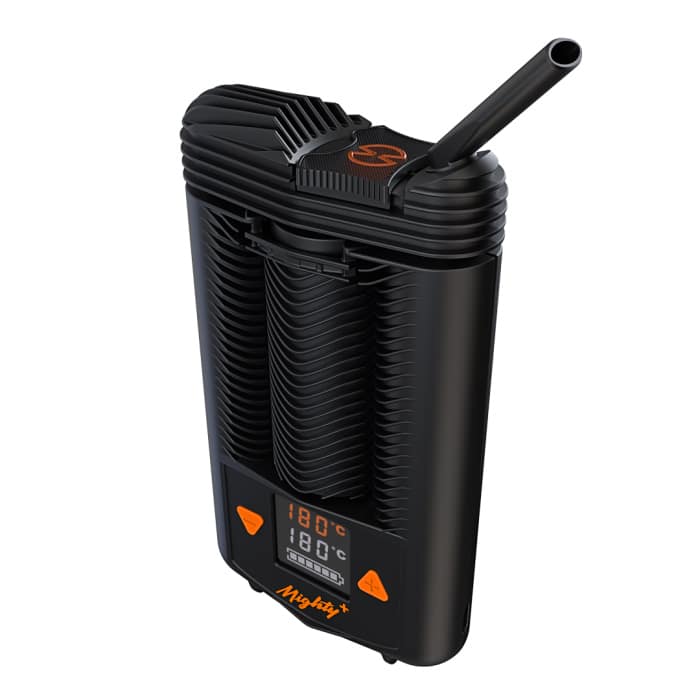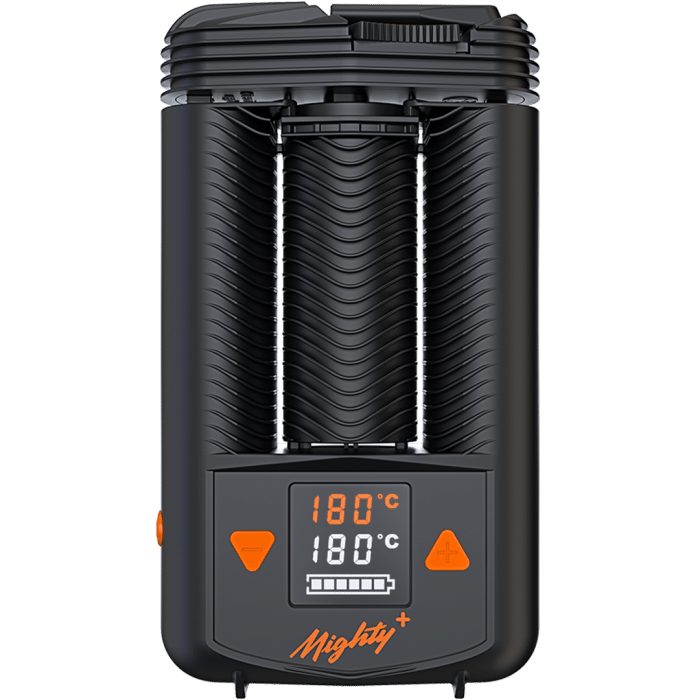The Mighty+ Vaporizer by Storz & Bickel
Storz & Bickel
Mighty+ Vaporizer
Storz and Bickel is the brand that people know and trust for their vaporizer needs. From the iconic Volcano to their newly updated Mighty Plus portable line-up.
The company is responsible for of the best high-end vaporizers on the market; The Mighty+ delivers exceptional build quality and value for portable users.
Use coupon code SB20 to save $79 at POTV.
$399 $319
Proudly featured in:

60s
New Quick start mode
The Mighty Vaporizer incorporates all of the features you love in a portable vaporizer and provides industry’s best vapor quality and warranty.
Before I go into our own Mighty review, there are a few impressive specifications and features that you should know about.
- Automatic switch off.
- Convection heat.
- Digital temperature control and battery monitor.
- Dual lithium battery.
- 5” x 3.2” x 1.2”dimensions.
- Weight of 0.5 pounds.
- Temperature range of 105F – 410F.
- Heat-up time of 60 seconds
Improved Efficiency & Durability
If you are looking for a pocket sized device for the outdoors, the Mighty+ delivers.
Ceramic Coated Heating Chamber
Enjoy better flavor and more potency.
Colors & Materials
The Mighty+ uses medical-grade plastic that’s resistant to chemicals and heat.
Superbooster Mode
The new Superbooster mode will increase the temperature by 27 ºF . To activate Superbooster mode, simply triple-click the on/off button.
Power & Ports
Improved battery life and universal USB-C charging help you stay powered up on the go. Get 80% charge in less than 40 minutes.
Enlarged high-yield chamber
If you’re new to vaping, the Mighty Plus Vaporizer is the easiest to use on the market.
How much herb can it hold?
1.4 cm³ without overpacking.
Mighty+ Vaporizer Reviews
From the original Mighty Vape release in the 2010’s to our new and improved Mighty+ vaporizer. S&B latest update delivers lasting quality and fair value with the industry’s best warranty.
Key Enhancements
Unmatched Vapor Quality
Vapor quality from the Mighty+ stands out on its own, but it reaches new heights with the addition of a glass mouthpiece adapter. Incorporating glass cooling stems, mini bubblers, or a water pipe adapter amplifies the vaping experience. Users can enjoy not just cooler draws, but also a more pronounced flavor profile, thanks to these enhancements. These accessories elevate the Mighty+’s already remarkable performance, especially when seeking a smoother, cooler, and more tasteful vapor.
Convection & Conducting Heating
The Mighty+’s hybrid heating system starts with convection to gently warm the dry herbs, maintaining the integrity of the flavors. As the session continues, conduction heat takes over to fully extract and unleash the potency of the herbs. Such a meticulous approach to heat application ensures a satisfying and efficient session each time.

Durability: The Mighty Plus is equipped with a ceramic coated filling chamber for added robustness.
Vaping Efficiency: The updated Mighty performs consistently at various temperature settings and is suitable for both solo and group use.
Use coupon code SB20 to save $79 at POTV.




